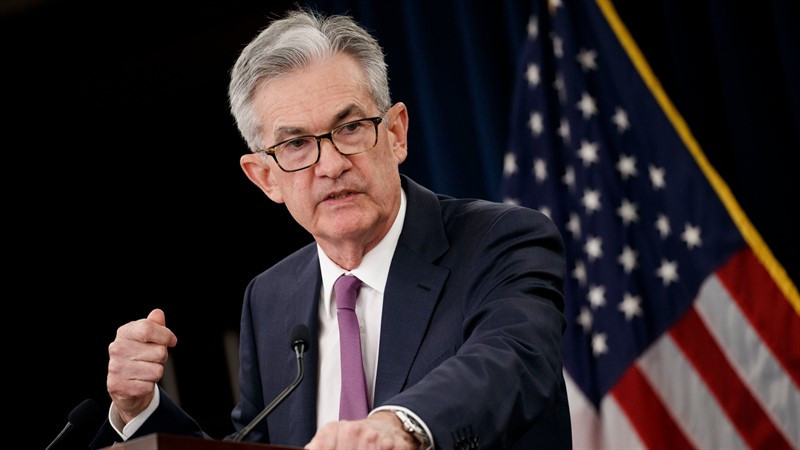
Today, the Fed will announce a verdict on monetary policy. Although it is not expected that the regulator will adjust interest rates and increase the volume of the program of quantitative easing (QE), the results of the FOMC meeting can become a serious driver of the foreign exchange and stock markets.
There are a number of points that investors should pay attention to:
1. Scatter plot.
It is a forecast of the range of interest rates and is one of the important components of the upcoming statement by the American Central Bank.
The final timeline was published in December, as the March meeting of the Federal Reserve was canceled. Then the regulator believed that interest rates would remain unchanged during 2020. At that time, the rates were, of course, significantly higher, so you should wait for the forecast to decrease at least to the current level. This raises the following question: how long will the bets hold at their lows? It is believed that the Fed will not tighten the monetary rate in 2021, but a scatter chart may show the Central Bank's reluctance to raise rates until the end of 2022. The longer they postpone the tightening monetary policy, the more negative will be the consequences for the yield of US government bonds and greenbacks.
2. Economic forecasts.
Six months have passed since the latest economic forecasts by the Fed were published. The National Bureau of Economic Research said on Monday that the United States entered a recession in February. In this regard, forecasts of economic growth for 2020 from the Fed can be terrible. In this case, the main attention will be focused on the expected dates of GDP recovery. It is obvious that the US economy is on its way to recovery, but it is not yet clear how long it will take: 9-12 months or 2-3 years? The faster, the better for USD.
3. Own forecasts of the head of the Fed Jerome Powell and his signals to the markets.
The fact that in the foreseeable future the policy of the American Central Bank will be stimulating in nature and the regulator will be ready to soften it if necessary, is beyond doubt. However, the question is different: does Powell believe that the worst-case scenario was avoided? Does the Fed chairman expect US economic growth to accelerate in the second half as the local labor market recovers? How concerned is he with the prospects for the second wave of the COVID-19 pandemic?
The policy of low-interest rates and an infusion of dollar liquidity served as the main driver of economic recovery and the US stock market. Any hint at its end may lead to a drop in shares and strengthen the greenback.
Admittedly, a strong US labor market report for May put the Fed in a difficult position. The decline in unemployment and the maximum monthly increase in employment since 1939 are strong arguments in favor of the V-shaped recovery of US GDP, which the White House continues to talk about. US President Donald Trump can't even find the words to describe how fast the national economy will take off next year. Meanwhile, according to Powell and his colleagues, the process of returning GDP to the trend promises to be long. This will keep the federal funds rate close to zero for a long time and will require additional fiscal incentives. However, a pleasant surprise from American employment allows the Central Bank to be more optimistic than before. However, this optimism would not drop the American stock market.
Expectations of Powell's "dovish" rhetoric on the eve of the announcement of the results of the June FOMC meeting allowed the EUR / USD pair to rebound from support at 1.1240–1.1245 and move up the whole figure.

Apparently, investors expect the Fed to focus on its readiness to keep rates at the current level (0–0.25%) over the next few years and signal a transition to a bond yield targeting policy. This is a bearish signal for the US dollar, which is also under pressure from the seasonal factor. Over the past ten years in June, the USD index declined in eight cases by an average of 0.7%.
Since the beginning of the month, the greenback has already fallen in price by more than 2%, but investors are still determined to buy EUR / USD. According to DoubleLine Capital experts, the US double deficit (negative balance of the budget and trade balance) may increase to 12% of GDP, as a result of which the greenback will return to 2011 levels.
After a short correction, the euro again found the strength to strengthen, adding to the US dollar the twelfth trading session of the last thirteen.
Support for the single European currency is provided by hopes for a large-scale fiscal stimulus in the EU that can smooth out the recession in the region. In addition, in the face of the aggressive monetary expansion of the ECB rival central banks, negative rates in the eurozone are no longer as painful for the euro as before.
Meanwhile, an increase in Treasury yields and the cessation of discussions that the Fed may lower interest rates below zero are good news for the greenback.
Bank of America strategists believe that demand for the dollar as a safe haven asset may increase in the coming months, as the pace of global economic recovery is likely to disappoint the market. Interest in USD purchases can also return the second wave of the coronavirus pandemic and the resumption of trade wars. Given the absence of these events, the basic scenario is the growth of the main currency pair to the levels of 1.1470 and 1.1550. Moreover, Powell's unexpected optimism may serve as a reason for a rollback. Powell suggests that the EUR / USD rally in anticipation of the announcement of the results of the June meeting of the FOMC will be dovish.





















